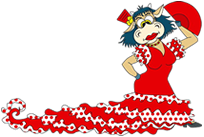-
Wiki
Tangos, this palo belongs to the gypsy singing branch and to the "tientos" family, typical singings to dance. This is a flamenco with "copla" "palo", containing three or four octosyllable lines. Considered like one of the basic styles of flamenco. We can find it under several modes: from Cadiz, Triana, Jerez or Malaga. All the theories are talking about its origin between Cadiz and Sevilla, nothing to do with the Argentinian tango. Possibly coming from old singings of the XIX. Century. Those singings experienced changes until they took the shape that we know today: a singing performed in 4/4 and in all the possible tonalities. The first singers were El Mellizo and Aurelio Sellés in Cadiz, Pastora Pavon and "el Titi" in Sevilla, Frijones and "el Mojama" in Jerez, and La Pirula, la Repompa and el Piyayo in Malaga.












